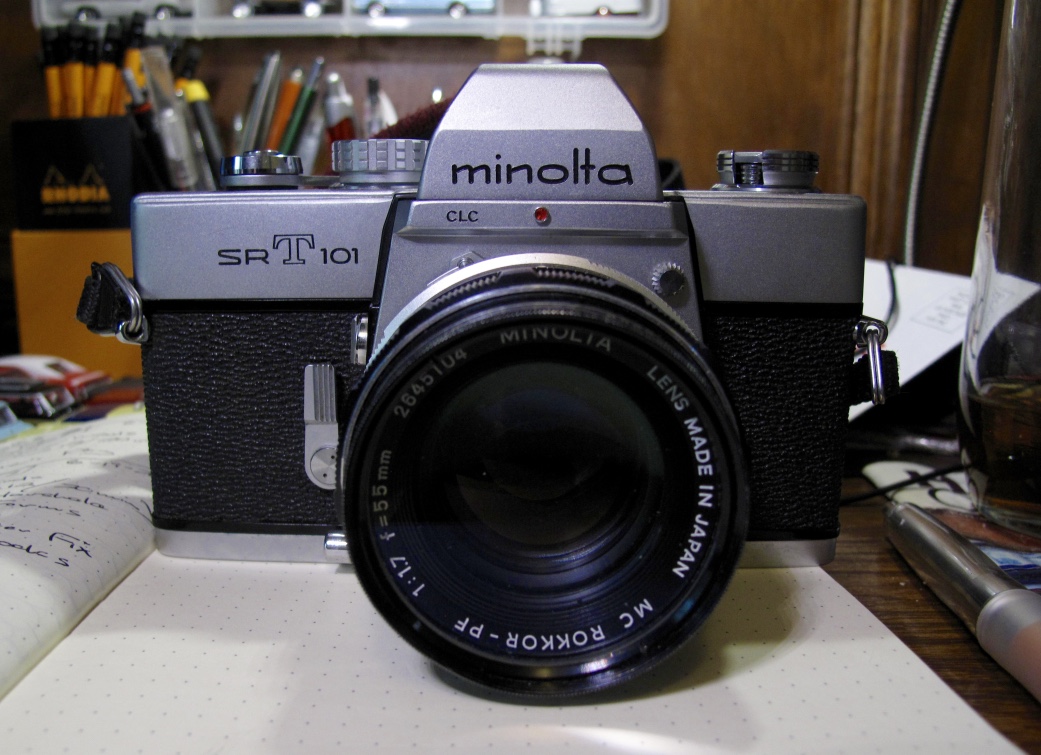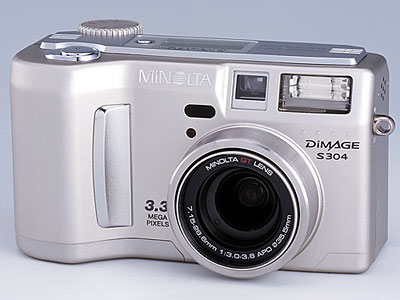Cameras & Video
Vintage and Budget Camera Equipment
Photography
I didn’t really get into photography until I was in college, but I’ve been fascinated by cameras ever since I was a little kid. There’s just something about the way they look that has always appealed to me. And aside from being works of art in their own right, they’re also cool because of their mechanical, electronic, and optical complexity. I’ve owned quite a few cameras over the years, and they basically fall into the following three categories.
- Film cameras that I actually used to take pictures before making the switch to digital sometime in the mid 2000s
- Vintage cameras purchased mainly as “works of art”, most of which I’ve never used or only used once or twice
- My DSLR and other digital cameras that I use for video in addition to taking still shots
I still have most of the cameras I’ve ever owned, and I thought it might be fun to document some of them here. There’s nothing particularly rare or valuable in my collection, but each one is interesting in its own way.
The Minolta SR-T 101 was my dad’s first and only SLR camera, which he purchased in the late sixties to take on Navy carrier cruises overseas. He also briefly had a black & white darkroom when I was really little, and would develop pictures he took of the family in the early 70s. A few years later, he let me bring it to a photography mini-course at my grade school where I first learned a little bit about composition and technique, and it subsequently became my primary camera when I started to get more serious about photography in college.
I only ever had one compatible lens, the MC Rokkor PF 55mm F/1.7 that came with it as part of a kit. Apparently, this was the “economy” lens, with the standard being a 58mm F/1.4. A very fast 58mm F/1.2 lens was also available as a rather expensive upgrade, and these sometimes come up for sale on eBay for $300 to $600+ depending on the condition.
I love the classic looks of this camera, and I still take it out on occasion when the mood strikes me. Using a mechanical SLR is a lot of fun, but digital has made me a bit lazy when it comes to actually developing film. I used to develop black and white images at home — several years before digital really came into its own — and almost all of the images I developed came from this camera.

My first digital camera was a 3.3 megapixel Minolta Dimage S304 that I purchased new in 2001. I did a fair amount of research trying to find something that I woudn’t outgrow too quickly, and I found a really good recommendation for the S304 on dpreview.com. This camera had a great CCD and lens combination for a point-and-shoot, and I also really liked the way the camera looked compared to other digital cameras of the time, with a high quality brushed metal body and bezel around the lens. I ended up finding a pretty good deal on it too at The Good Guys in Emeryville CA.
Once I started using the camera, I found that the 3.3 mp resolution was fine for 4 X 6 prints or smaller, but I couldn’t enlarge to 8 X 10 without some noticeable pixelation. As I started to use Photoshop to crop more and more often, I began to find the resolution a bit lacking. Shortly after it came out, a new crop of 7 megapixel cameras flooded the market and eventually I started to look for a replacement. I took a lot of pictures with this camera, though, and was impressed with the clarity and sharpness of the images it captured. I gave this camera to a friend a few years ago, but I still have fond memories of it.

The Nikon D80 was the first DSLR I ever bought, and until recently I still used it for nature and travel photography when I don’t mind lugging something big and heavy around. I did some research before buying and looked at a lot of other DSLRs like the Canon Rebel, the Pentax, and the Sony Alpha, but ultimately the D80 seemed to have the best build quality, as well as being the most ergonomic. I had never owned a Nikon camera before and didn’t have any lenses, but decided it was finally time to see what all of the Nikon fuss was about. I currently have two inexpensive lenses for this camera: a Nikon AF-S DX Zoom-Nikkor 18-135mm f/3.5-5.6G IF-ED and a Nikon AF-S DX NIKKOR 55-200mm f/4-5.6G ED VR II.
The first is a wide-angle to mild telephoto zoom that came with the camera as part of a kit. There’s no vibration reduction on this one, but it does have a quick and sharp autofocus. While I would have preferred a little more zoom capability, it’s still a versatile lens that performs very well. Unfortunately, though, it stopped working at the very beginning of a cross-country road trip I took in 2008. The autofocus jammed, and the manual focus ring wouldn’t work either. I had to send it to Nikon for repair under warranty when I returned, and it took them several weeks to get it back to me. It’s been working for the last few years and is still my primary lens, but I wouldn’t be surprised if it eventually broke again.

The second is a 55-200mm telephoto zoom that has an angle of view equivalent to that of a 82-300mm lens on a full-frame 35mm digital camera. I bought this as a more powerful zoom while my other lens was at Nikon being repaired. For around $150, this lens was a great deal, especially since it also has vibration reduction. The only issue is that the limited wide angle means you can’t take pictures very close, so you end up swapping lenses often, something I don’t really like to do when I’m out and about.
Unfortunately, my D80 displayed a flashing Err message the last few times I turned it on, and it will no longer autofocus or save images to the flash card. Most likely, this is a problem with the Aperture Control Unit, a common issue with this model. The camera not worth paying someone to repair, but I may try to fix it myself at some point. If so, I’ll post a video here. If I can’t fix it, then I may replace it with a used D90 which isn’t prone to the same failure. Someday I’d like to get a more modern full-frame DSLR, but I’ll stick with this one (or one like it) for the forseeable future. It’s still more capable than I am as a photographer, so there’s no much danger in me outgrowing it. And I can deal with the lenses I have for now. I’d love to get an 18-300mm at some point too, although these are still very pricey even in DX form.
I bought a Canon G10 in 2009 as a secondary camera that I could use when I didn’t feel like lugging my D80 around. Sort of half way between a DSLR and a simple point-and-shoot, the G10 has some advanced features like program mode and raw image capture, but doesn’t have interchangeable lenses or the ability to see through the lens via the viewfinder. Aside from my iPhone 6, I actually use the G10 more than any of my other cameras. I used to take lunch breaks to visit the Botanical Gardens when I worked in Berkeley, and I often took the G10 since it fit easily in my laptop bag. There have been very few situations where I couldn’t do what a DSLR would have enabled me to do. The only two things I wish this camera had are 1) an articulated LCD screen, and 2) 1080p HD video capability. The G11 model that came out shortly after I bought this one had an articulated screen, but I think you have to jump forward to the G15 to get the full HD video. I’d love to have the newer G7 X Mark II which I could also use for videos, but they’re still a little pricey.